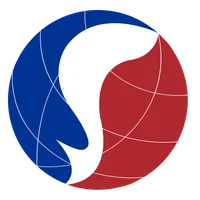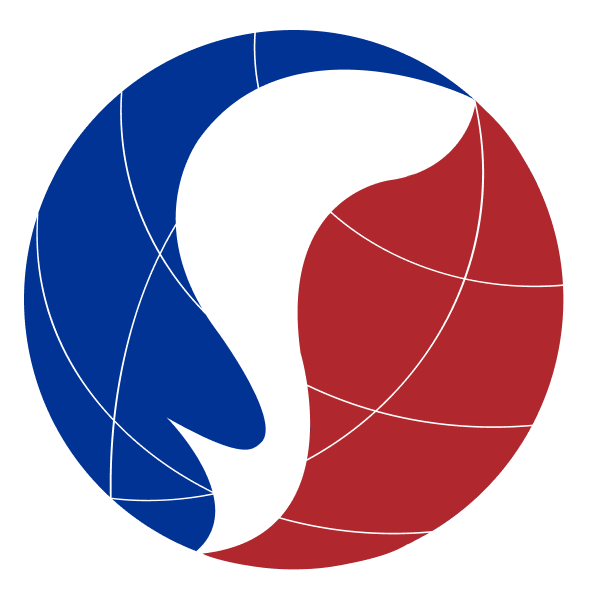
SalMar ASA
OSE:SALM


Utilize notes to systematically review your investment decisions. By reflecting on past outcomes, you can discern effective strategies and identify those that underperformed. This continuous feedback loop enables you to adapt and refine your approach, optimizing for future success.
Each note serves as a learning point, offering insights into your decision-making processes. Over time, you'll accumulate a personalized database of knowledge, enhancing your ability to make informed decisions quickly and effectively.
With a comprehensive record of your investment history at your fingertips, you can compare current opportunities against past experiences. This not only bolsters your confidence but also ensures that each decision is grounded in a well-documented rationale.
Do you really want to delete this note?
This action cannot be undone.

| 52 Week Range |
524
715.4
|
| Price Target |
|
We'll email you a reminder when the closing price reaches NOK.
Choose the stock you wish to monitor with a price alert.
This alert will be permanently deleted.
 SalMar ASA
SalMar ASA


 You don't have any saved screeners yet
You don't have any saved screeners yet

Good morning, and welcome to SalMar's Third Quarter Presentation. I'm Olav-Andreas Ervik, and with me, I have CFO, Trond Tuvstein. We'll hold same agenda as in previous presentations, starting with highlights. And there's been a strong operational performance this quarter with the cost improvement and good price achievement. We have seen record-high volumes for sales and processing with a positive contribution. Total operational EBIT of NOK 939 million. A guiding of 143,000 tonnes for 2018 has remained, and we expect harvest of 145,000 tonnes for 2019. New addition in the value change (sic) [ chain ] in this period is within the segment of Sales and Processing. In August 2018, SalMar announced the plan of building a new harvest plant on Senja in Northern Norway named InnovaNor. Our plan is that the facility will be up and running in the second half of 2020. And on the operational updates, starting with Farming Central Norway, which has a strong operational quarter with record-high harvest volumes. As expected, Farming Central Norway delivered strong cost improvements in the third quarter with the harvest of spring 2017 generations. Spring 2017 is also the main contributor of harvest volume in the period. This generation performed very well biologically with low mortality, few delousing treatments and good growth during the summer and autumn, which has resulted in low costs and good average weights. At the close of the quarter, harvesting of the spring 2017 generation is completed, and we have started on autumn 2017. And since we started on the autumn 2017 generation, we expect an increase in costs in the fourth quarter. The main reason for this is that the fish transferred into the sea autumn 2017 has encountered a more challenging biological situation compared to spring '17. And the main contributor for this is that the fish has to be in the sea for a second autumn and thereby experience a more challenging biology. Guiding of 100,000 tonnes in 2018 are maintained, unchanged from previous quarter. Farming Northern Norway. Operational performance as expected. Previously -- as previously announced, this reduction in harvest volume was planned. Due to investment in new MAB capacity combined with lower growth rates, harvesting plans have been alternate (sic) [ altered ] to optimize average weights and utilize MAB and the volume potential of the standing biomass. Fall 2016 generation finished harvesting during the period, and we started harvesting on the spring 2017 generation. High cost per kilo due to low volumes and end/start harvesting of 2 generations and high fixed unit costs. Additionally, the last year, we have experienced a more challenging biological situation in Northern Norway, with low temperatures in the sea and higher levels of sea lice than we had experienced earlier. In the coming quarter, we see an increase in harvest volume and a slight decrease in costs compared with third quarter, mainly because of higher volume and harvesting spring 2017 generation. Guiding of 43,000 tonnes in 2018 maintained, unchanged from previous quarter. Sales and Processing. Good price achievement, 42% of the harvest volume sold as fixed-price contracts with prices above our export price. During a period with high harvest volume, driven by large volume from Farming Central Norway and external volume from the same region, we have, through strong operational performance from the employees, increased efficiency in both harvesting and processing activities, which has resulted in positive contribution for that segment. July was the month with the highest volume harvested at InnovaMar ever, 17,200 tonnes, which is the highest volume through InnovaMar since we started up the facility in 2010. Contract share currently around 35% for Q4 2018. Norskott Havbruk, or Scottish Sea Farms, good biological performance and average weights for the sites harvested in the quarter. Cost increase from Q2, driven by higher costs in Shetland region. Results negatively impacted by lower harvest volume in Scotland and Orkney regions. New freshwater facility on track, as communicated earlier, and harvest guidance at 26,000 tonnes for 2018 are maintained, unchanged from previous quarter. Arnarlax. The company is still in an early phase, and the result in the period is negatively affected by underlying costs of the harvested biomass, in addition to high fixed unit costs resulting from a low harvest volume. Expect harvest volume of 6,100 tonnes in 2018. This is 600 tonnes less than we estimated and published at the close of the previous quarter and is due to lower on growth than expected. To secure the company's further growth, it has been necessary to strengthen its capital base. Therefore, a cash issue of NOK 200 million has been carried out during the quarter. Following this issue, SalMar has indirect shareholding of 41.95%. Offshore fish farming. Ocean Farm 1 has now been in operation since late September 2017 and is now in the final stages of pilot testing. Test harvesting undertaken according to plan at the end of third quarter with good results. Remaining volume will be harvested out in fourth quarter this year. New smolt are scheduled to transfer to the Ocean Farm facility in 2019, which will be ready for harvest in 2020. Smart Fish Farm applied for 16 development licenses, which has been confirmed within the development license scheme. Currently, we're awaiting approval from the authorities. And then the financial update, and Trond, you take it from here.
Yes. Thank you, Olaf, and good morning, everyone. I will take you through the overall financial figures for the third quarter 2018. And as usual, we begin with this waterfall analysis. And the key takes here are, despite significant drop in the spot prices, the margin in this quarter is up compared to the last quarter. The Sales and Processing is back in black. Strong sales performance supported by a 42% contract share, together with the strong operational performance and high utilization of capacity in the industry department, explains why this segment has increased EBIT per kilo by NOK 6.44 from the previous quarter. For the farming segment, the cost of harvested biomass in this quarter has been significantly lower than in the previous quarter. As mentioned earlier, the spring 2017 generation in Central Norway has performed very well. Overall, this segment has increased EBIT per kilo by NOK 7.86, taking into account the drop in spot prices. In total, this builds up an EBIT per kilo of NOK 26. And then over to the P&L. Operating revenues in the third quarter amounted to NOK 2.8 billion, up NOK 19 million from the corresponding quarter in 2017. Volume is up 2,100 tonnes from 34,000 tonnes in 2017 up to 36,100 tonnes in 2018. When it comes to prices, we see a stable price achievement year-over-year. Operational EBIT for the quarter ended at NOK 939 million, corresponding to our operational margin of 34%. This is NOK 138 million higher than in the third quarter of 2017 and explained by high volumes and lower costs. In the third quarter, we have posted a positive fair value adjustment of NOK 255 million, explained by increased value of biomass. EBIT for the period ended close to NOK 1.2 billion. Income from associated companies totaled NOK 34 million, mainly related to share of profit from Norskott Havbruk. Interest expenses, NOK 29 million, leaving us with a profit before tax at NOK 1.2 billion. The calculated tax cost for the period is NOK 269 million and a net profit for the period of NOK 936 million. A strong quarter for SalMar in terms of earnings. And over to the balance sheet and the key takes here. As we can see, our total assets has increased with NOK 845 million during the quarter, up to NOK 14.3 billion, driven by a higher value of current assets. Only minor changes in our total fixed assets. At the moment, here we are in a steady state. A seasonal buildup of the biomass, together with higher forward prices, explains the increase in value of inventory. We can see a reduction in account receivables and other short-term receivables, mainly explained by a reduction in harvesting volume at the end of the quarter, meaning compared September to June. The underlying credit risk is considered to be low. We see an increase in cash holdings, and that will be explained through the cash flow statement. Retained earnings explains the buildup of equity of NOK 943 million. And our equity, just above NOK 7.9 billion at the end of the third quarter. We have also reduced net interest-bearing debt by NOK 1.2 billion during the quarter, meaning that SalMar at the end of the quarter have a solid financial position with an equity ratio of 55%, net interest-bearing debt of NOK 1.3 billion and NOK 3.7 billion in undrawn credit facilities. And at last, some comments on the cash flow. Another quarter with strong operational cash flow, a total of NOK 1.3 billion in the third quarter. And here, we can see a positive change in working capital, mainly due to our reversed factoring agreements. During the quarter, we have invested a total of NOK 112 million in operating assets. Also received the dividend in the third quarter of NOK 80 million from our operations in Scottish Sea Farms. As mentioned, in addition, we have taken part in the capital increase in Arnarlax with NOK 93 million to support further growth on Iceland. Altogether, this means a net outflow from investment activities of NOK 135 million in the quarter. The net free cash flow have been used to reduce interest-bearing debt by NOK 857 million during the quarter. In addition to -- in addition, we have paid interest of NOK 29 million. Altogether, this leaves us with a positive change in cash of NOK 133 million in the third quarter. Thank you. Now I pass the word on to you, Olav.
Thanks, Trond. Yes, then we're -- and we're having the outlook left. And the outlook, slight increase in cost expected in Q4 2018, down in Northern Norway and slightly up in Central Norway. Contract share for remaining volume in 2018 currently around 35%. Remaining volume from Ocean Farm 1 will be harvested and sold in the fourth quarter. Guiding of 143,000 tonnes maintained for 2018. In this volume, Ocean Farm 1 represents about 5,000 tonnes. Growth in harvest volume from 2019 from 143,000 tonnes to 145,000 tonnes. In reality, when we exclude volume from Ocean Farm 1, which will not be present in 2019, the increase is 7,000 tonnes as Ocean Farm 1 accounts for around 5,000 tonnes of the harvest volume this year. For Ocean Farm 1, the plan is to transfer new smolt into the facility in 2019, which will be ready for harvest in 2020. We expect continued good demand in core markets and limited increase in global supply. Thank you for listening to us.